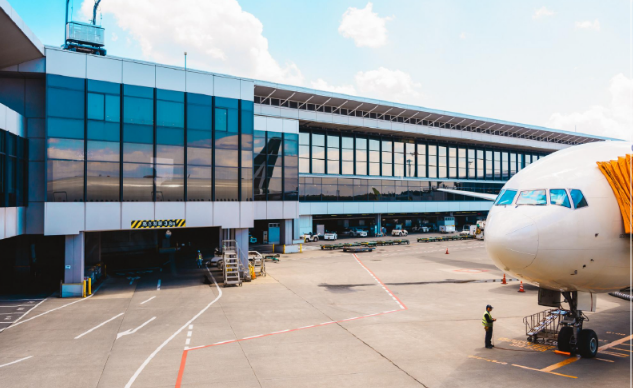
Air travel has undergone significant transformations over the years, and one of the most notable aspects of this evolution is the development of airline terminals. These bustling hubs are more than just waiting areas for passengers—they are complex infrastructures designed to enhance efficiency, security, and the overall travel experience. Whether you're traveling for business or leisure, the design and functionality of an airport terminal can significantly impact your journey.
As airports continue to expand and integrate advanced technologies, modern airline terminals are becoming more streamlined, luxurious, and environmentally friendly. To explore the latest developments in airport infrastructure, visit airline-terminals and stay updated on the world's top terminals and their innovations.
The Changing Landscape of Airline Terminals
Decades ago, airline terminals were primarily designed to facilitate ticketing, baggage handling, and boarding. However, with the growing number of travelers, these terminals have expanded into multi-functional spaces offering cutting-edge technology, world-class amenities, and sustainable solutions.
Today’s major international airports, such as Dubai International Airport (DXB), London Heathrow (LHR), and Singapore Changi Airport (SIN), have redefined the terminal experience by integrating automation, smart security features, and enhanced passenger comfort. The focus is not only on speed and convenience but also on luxury, entertainment, and sustainability.
Key Features of Modern Airline Terminals
1. Contactless Check-In and Security Upgrades
Long queues at check-in counters and security checkpoints are becoming a thing of the past. Many modern airline terminals have introduced:
Biometric verification systems, allowing passengers to check in and board flights using facial recognition.
Self-service kiosks, enabling quick check-ins without human assistance.
Automated baggage handling, reducing lost luggage incidents.
E-passports and digital boarding passes, minimizing the need for physical documents.
Airports like Incheon International Airport (ICN) and Hamad International Airport (DOH) have set high standards for seamless check-in and security procedures, making travel more efficient and hassle-free.
2. Smart Navigation and AI-Powered Assistance
Navigating through large airline terminals can be overwhelming, but technology is making it easier than ever. Some of the latest advancements include:
Augmented reality (AR) maps, helping passengers find their way to gates, shops, and restaurants.
AI chatbots and digital assistants, providing real-time flight updates and answering travel-related queries.
Real-time congestion monitoring, allowing airports to direct passengers to less crowded areas for a smoother experience.
Beijing Daxing International Airport (PKX) is one of the world’s most technologically advanced airline terminals, utilizing AI-driven navigation tools to enhance passenger flow and convenience.
3. Luxury and Comfort in Airline Terminals
Today’s airline terminals offer an array of high-end amenities that cater to both business and leisure travelers. These include:
VIP lounges, featuring gourmet dining, spa services, and private workspaces.
Sleeping pods and relaxation zones, ideal for travelers on long layovers.
High-end shopping experiences, with brands like Louis Vuitton, Rolex, and Chanel available in duty-free stores.
Cultural and artistic attractions, such as live music, art galleries, and digital entertainment zones.
Hamad International Airport (DOH) and Istanbul Airport (IST) have earned global recognition for their luxurious lounges and premium services, making air travel a more enjoyable experience.
4. Sustainable and Eco-Friendly Initiatives
As the aviation industry faces increasing environmental concerns, many airports are integrating sustainable practices into their airline terminals. Some key initiatives include:
Solar-powered terminals, reducing dependency on fossil fuels.
Water conservation systems, incorporating rainwater harvesting and efficient filtration.
Carbon-neutral initiatives, aiming to offset emissions and promote green energy.
Plastic-free policies, reducing waste and encouraging reusable alternatives.
Oslo Airport (OSL) and San Francisco International Airport (SFO) are pioneers in sustainable air travel, setting new industry standards for eco-friendly terminal designs.
5. Future-Ready Innovations in Airline Terminals
The future of airline terminals is being shaped by groundbreaking innovations, including:
Hyperloop connectivity, reducing travel time between airport terminals and city centers.
Fully automated terminals, using robotics for check-in, security screening, and baggage handling.
AI-driven passenger personalization, tailoring travel experiences based on individual preferences.
Drone-based logistics, enabling faster baggage transfers and cargo handling.
With ongoing developments at airports like Al Maktoum International Airport (DWC) and the upcoming expansions at New York JFK Terminal 1, the next generation of airline terminals promises a faster, safer, and more personalized travel experience.
The Role of Airline Terminals in Passenger Satisfaction
A well-designed airline terminal significantly impacts passenger satisfaction, influencing everything from stress levels to travel efficiency. Features such as comfortable seating, intuitive navigation, and entertainment options contribute to a positive experience. Moreover, airports that prioritize passenger convenience—through fast security checks, reliable Wi-Fi, and high-quality food options—often rank higher in global airport rankings.



Write a comment ...